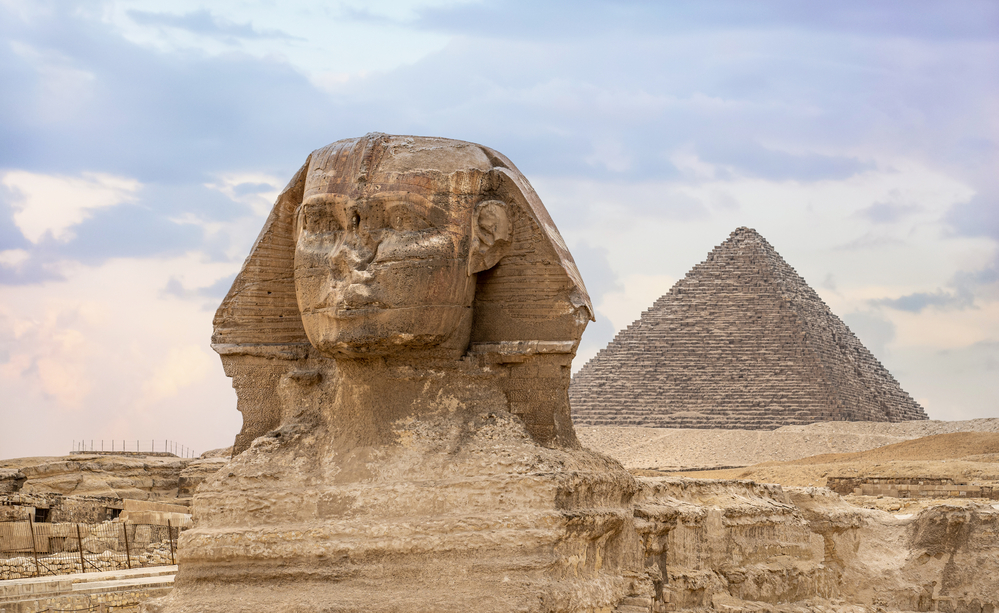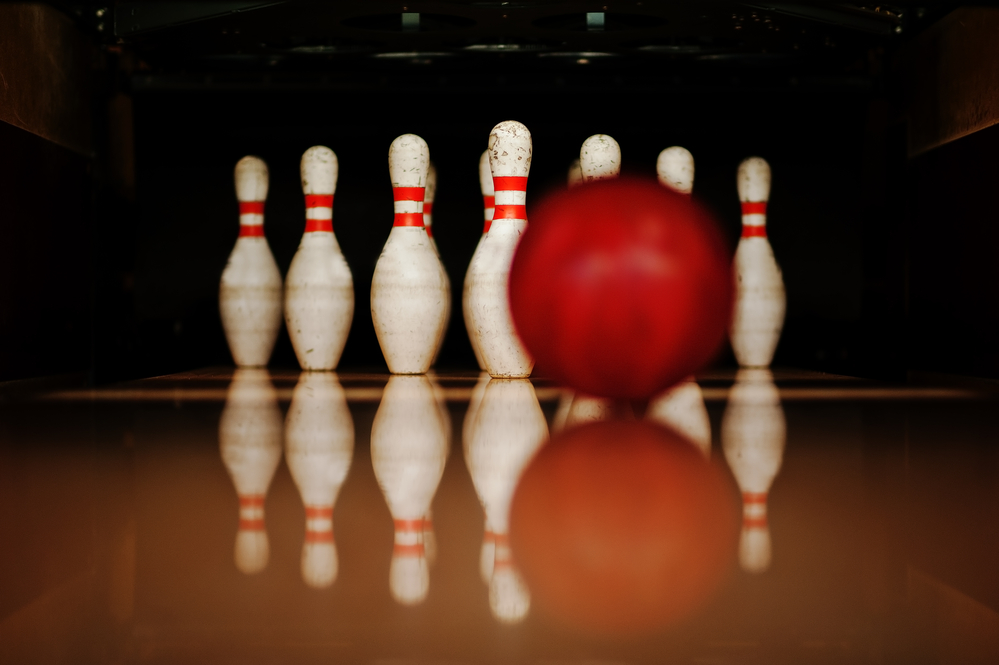
Every lane is covered in oil to protect the lane and enable the ball to roll smoothly. Bowling patterns refer to how that oil is applied to the lane. Any given oil pattern directly affects how your ball will react as it rolls toward the bowling pins.
There are various bowling patterns out there; in fact, there are hundreds. And the more you know about how to attack each one, the better you’ll be able to perform when facing one of them.
In areas with a lot of oil, the ball will roll mostly straight. But in drier areas, it's prone to curve, hook, or veer off course.
Contents
- 1 Sphinx Oil Pattern- What Is It?
- 2 How Your Bowling Ball Will React on the Sphinx Oil Pattern
- 3 How to Bowl on the Sphinx Oil Pattern
- 4 The Rule of 31 in Bowling
- 5 What Ball Should You Use on the Sphinx Oil Pattern?
- 6 The Sphinx Oil Pattern Is Not for Beginners
- 7 Pros and Cons of the Sphinx Oil Pattern
- 8 Where to Play on the Sphinx Oil Pattern
Sphinx Oil Pattern- What Is It?
The Sphinx oil pattern is one of Kegel's Landmark patterns - Kegel is one of the largest manufacturers of lane oiling machines. It is a very aggressive and difficult pattern to maneuver. It can even give professional bowlers a run for their money.
The pattern is 40 feet long and utilizes a total oil volume of 25.2 ml, with 15.8 ml forward oil and 9.4 ml reverse oil. The pattern begins with combined oil (forward and reverse oil) gutter to gutter from the foul line to the 11-foot mark. Then, there's reverse oil from the 11-foot mark to the 12-foot mark from gutter to gutter.
From that point, there's reverse oil up the middle of the lane to the 31-foot mark. The pattern is buffed out from there.
This can be a lot to visualize - this diagram will help you out!

How Your Bowling Ball Will React on the Sphinx Oil Pattern
With the basics of the pattern down, you're ready to learn how your ball will react to this lane condition. Because of the lane's heavy oil content at the start, your ball will begin going straight without much sideways movement.
But once you get past that oil slick, there's not much oil up the middle to the 31-foot mark. This presents a problem - if your throw isn't straight enough, your ball could miss that oily area and veer into the gutter.
It's important to know that every bowling ball may react differently on this particular lane condition, so it's essential to test your ball and see how it reacts. Also, as you bowl on this pattern, the oil will move around and take on a new shape, which means you'll need to be able to adjust your strategy mid-game.
How to Bowl on the Sphinx Oil Pattern
Playing narrow (tight) is the only way to go with the Sphinx pattern. That means you should stand in the middle of the lane and throw your ball straight.
This may not be an issue for beginners who may have already gotten accustomed to (and may prefer) straight bowling. But if you usually hook your ball from the far side of the lane, lots of gutter balls could be in your future.
If you're a straight bowler, these lane conditions will not be a problem - continue bowling as you usually would, targeting either the headpin or one of the spots between pins 1 and 2 or 1 and 3. These spots increase your probability of getting a strike.
If you're a hook bowler, you'll need to work very hard on your aim and technique, as well as your shot selection. Rolling the ball up the middle is your best bet. If you play too far to either side, you'll be in the gutter a lot.
The Rule of 31 in Bowling
When drafting a hooking strategy for specific oil patterns, the rule of 31 almost always comes into play. It helps you decide your breakpoint, the point at which the ball stops going straight and makes a defined turn toward the pins. Targeting your breakpoint will increase your probability of nailing strike after strike.
To calculate your breakpoint, you'll subtract 31 from the length of the pattern - in this case, the length of the Sphinx pattern is 40 feet. So, your calculation will look like this: 40-31 = 9. You'll strive to get your ball to break (start hooking) at board 9. Getting your ball there will take some trial and error, but it's nowhere near impossible.
What Ball Should You Use on the Sphinx Oil Pattern?
Now that you know the characteristics of the Sphinx oil pattern, it is time to choose a ball. When choosing a ball for the Sphinx oil pattern, consider your bowling style and ability. If you're a straight bowler, you'll need a plastic ball to complement that.
But if you prefer hook shots and want to maximize your scoring chances, you need a urethane or reactive ball. Most pros opt for a reactive ball, but you should choose a ball you can control.
Reactive balls produce a lot of backend action (an extreme hook at the end of the lane), but they can be tough to handle. So, keep that in mind when choosing a ball for this pattern.
The Sphinx Oil Pattern Is Not for Beginners
The Sphinx Oil Pattern is not for complete beginners. It is designed for experienced bowlers who can control their shots. This oil pattern will challenge even the most experienced bowlers, requiring a healthy dose of precision.
If you want to give it a try, though, you can. Just be prepared for many gutter balls, especially if you haven't mastered your straight shot. If your throw is even a little bit off, your ball will end up in the gutter.
But after you've gotten some practice and have perfected the art of hooking your bowling ball or throwing the ball straight, you can give this oil pattern a shot.

Pros and Cons of the Sphinx Oil Pattern
When it comes to oil patterns in bowling, the Sphinx is a unique option that offers both pros and cons.
On the plus side, the Sphinx oil pattern is known for being one of the most difficult to read and predict. This can be a good thing for competitive bowlers who want to keep their opponents guessing. It can also make for a more challenging and interesting game for avid bowlers.
On the downside, the Sphinx oil pattern can be very frustrating for new bowlers trying to improve their game. Because it is so unpredictable, making good shots and breaking through plateaus can be challenging.
Where to Play on the Sphinx Oil Pattern
Do you want to give the Sphinx oil pattern a try? You can certainly do so. But finding a bowling alley with the pattern available will take some effort on your part. This Sphinx oil pattern is not commonly found in the average bowling alley.
You're more likely to find recreation-level patterns like the Great Wall of China or Main Street available for play. So, you'll need to call around to find a bowling center with the Sphinx pattern.

Related Articles
So, there you have it - everything beginners need to know about this oil pattern. Hopefully, you understand it better and can use this information to your advantage should you decide to try it. Good luck!
Kira Byrd, a Certified Fraud Examiner, holds a B.S. in Accounting from the University of Alabama at Birmingham. With a passion for bowling from her childhood, Kira has poured her expertise and personal experiences into creating and nurturing Bowling For Beginners. Kira's mission is to meet new bowlers where they are and guide them toward consistently achieving higher scores. With a focus on skill development and strategic techniques, she empowers readers to take control of their game and unlock their true potential.
Bowling For Beginners embodies strict editorial integrity, ensuring reliable and unbiased information. Kira's commitment to delivering valuable insights and practical strategies is reflected in every article. Here's an explanation of our editorial policy and how we get money.







